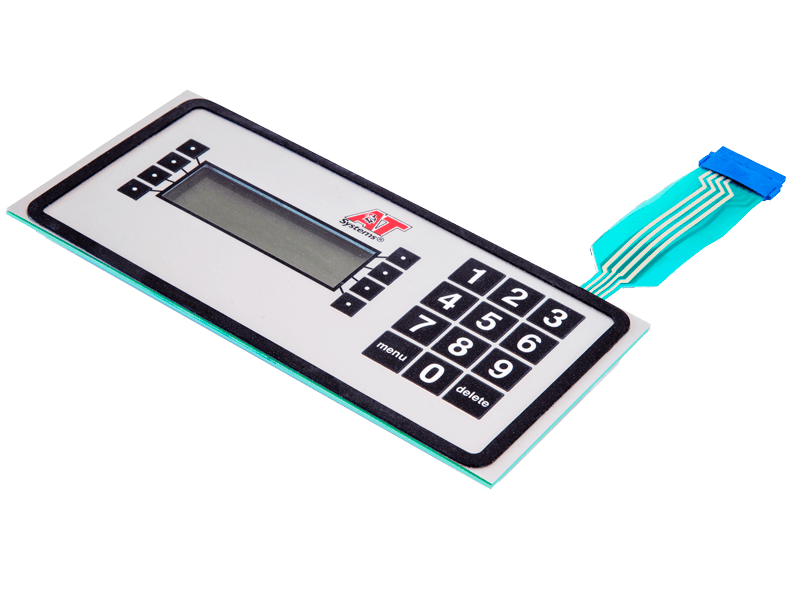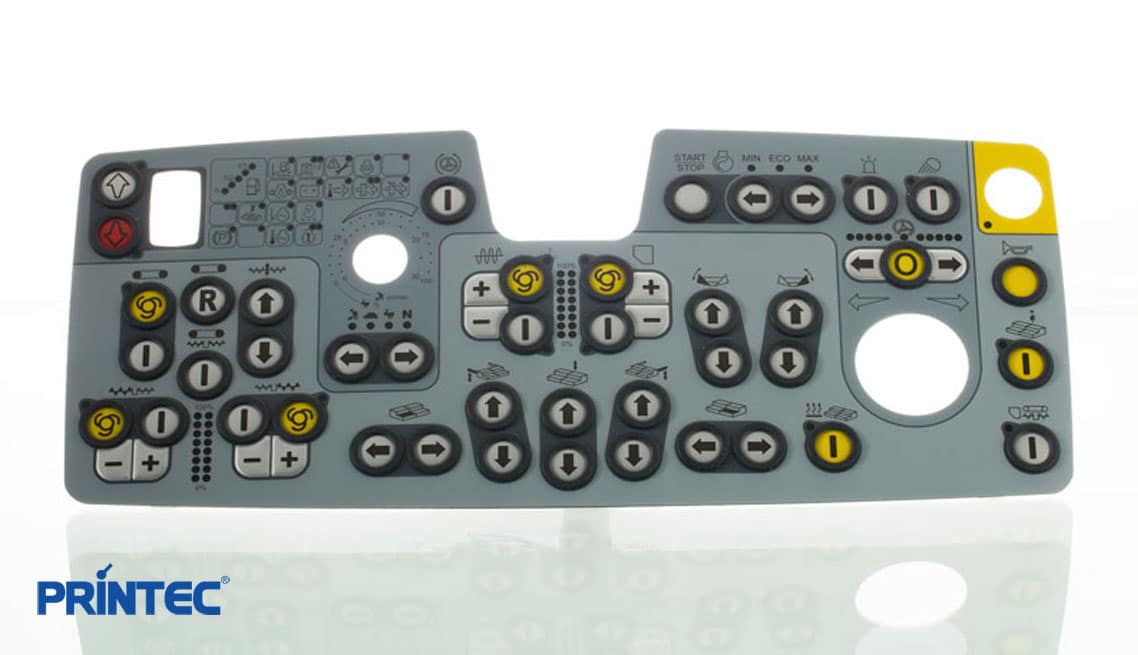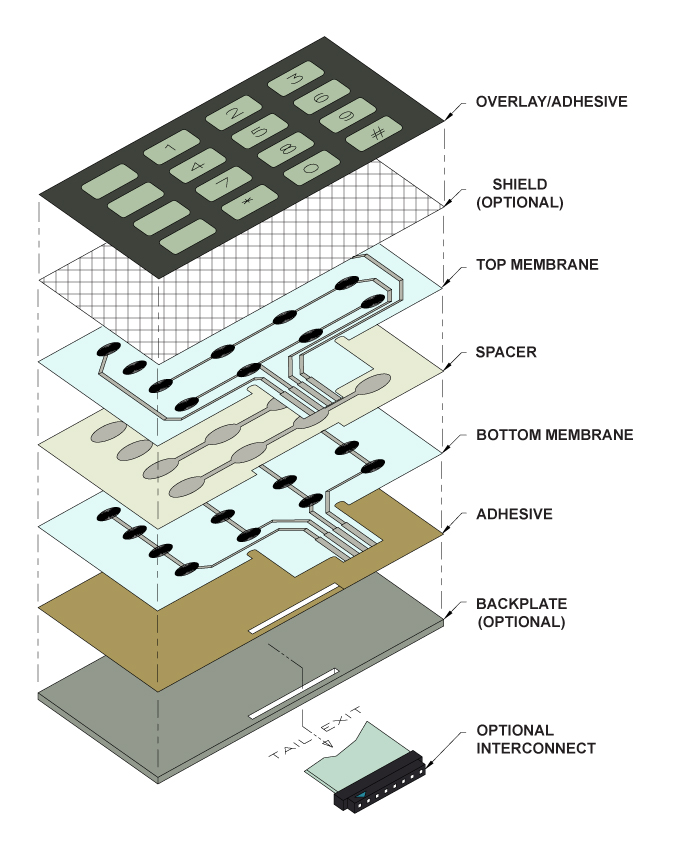Every successful product line begins with selecting the right membrane switch manufacturer early on.
Every successful product line begins with selecting the right membrane switch manufacturer early on.
Blog Article
All Concerning Membrane Layer Switch: Comprehending Its Layout and Performance
When you believe regarding the control interfaces in modern-day gadgets, membrane switches typically come to mind. Let's explore what sets membrane layer switches over apart from various other control systems.
What Are Membrane Buttons?

Their smooth nature makes them very easy to tidy and resistant to dirt and dampness, a vital attribute in lots of environments. Membrane switches can additionally be personalized concerning form, dimension, and graphics, allowing makers to produce one-of-a-kind user interfaces tailored to details items. And also, they're light-weight and slim, which helps in decreasing the general bulk of devices. Overall, membrane buttons play a substantial role in boosting customer experience across a large variety of applications.
Just How Membrane Switches Over Work
When you push a secret on a membrane layer button, it turns on an uncomplicated yet effective system. The leading layer, commonly made of flexible material, lowers onto a conductive layer beneath it. This action bridges the gap in between conductive traces, completing an electric circuit. As quickly as the circuit shuts, it sends out a signal to the tool's controller, which translates your input.
You'll see that the tactile feedback differs based on the button layout, providing either a soft click or a more pronounced response. When you release the trick, the membrane returns to its initial setting, resuming the circuit and quiting the signal. This procedure occurs practically instantaneously, ensuring a responsive user experience.
Membrane buttons are preferred because of their longevity and resistance to dirt and dampness, making them excellent for different applications, from family appliances to medical gadgets. Comprehending this procedure helps you value their widespread use.
Secret Components of Membrane Switches
Recognizing the vital parts of membrane switches is fundamental for understanding their performance and style. At the core, you'll discover the graphic overlay, which offers the aesthetic interface for users. Below that, there's a spacer layer that separates the circuit layers, guaranteeing that they do not make get in touch with until pushed. The circuit layer is where the magic occurs; it contains conductive traces that complete the circuit when you push the button. One more important aspect is the glue backing, enabling the button to follow surface areas safely. Finally, the safety layer guards versus ecological factors and wear, prolonging the button's life-span. Each component plays a substantial role in guaranteeing dependable performance and individual communication. By comprehending these components, you'll get insight right into exactly how membrane layer switches over run and their value in various applications.
Products Made Use Of in Membrane Layer Change Style
The performance and durability of membrane switches over greatly depend on the products made use of in their style. You usually run into polyester and polycarbonate as main substrates as a result of their exceptional toughness and adaptability. These materials stand up to scrapes and chemicals, making them optimal for requiring settings.
The conductive layers usually utilize silver or carbon, picked for their dependability and conductivity. membrane switch manufacturer. Silver provides superior performance, while carbon is an economical alternative. For the overlay, you could consider a matte or glossy finish, depending on your aesthetic requirements and customer experience
Make particular to choose adhesives that stand up to environmental aspects like temperature level and moisture. Picking the appropriate products will certainly guarantee your membrane layer switch stands the examination of time.
Design Considerations for Membrane Layer Buttons
While creating membrane buttons, it's important to take into account different variables that influence their capability and individual experience. Start by concentrating on the layout and button size; make particular they're instinctive and easy to navigate.
Don't forget the graphic style; clear labeling and color comparison are substantial for visibility. Verify your layout suits environmental factors, like wetness or temperature variations, which could impact efficiency. Bear in mind the importance of screening prototypes with actual customers to gather responses and make required modifications. This check iterative procedure assists you improve the layout, verifying it satisfies both functional and visual demands properly. By carefully considering these components, you'll create a membrane switch that enhances use and contentment.
Applications of Membrane Layer Buttons
Membrane switches are flexible components discovered in numerous applications, from commercial equipment to customer electronics. You'll see their impact in machines that require long lasting user interfaces and in gadgets that take advantage of streamlined layouts. Recognizing these applications aids you value the functionality and usefulness of membrane layer buttons in everyday modern technology.
Industrial Tools Use
When you're looking to boost the capability of commercial equipment, membrane buttons supply a trusted remedy that integrates longevity with user-friendly style. These buttons are ideal for severe settings, providing resistance to dirt, moisture, and chemicals. Embrace membrane switches to enhance your operations and improve general efficiency.
Customer Electronics Combination
In the domain of consumer electronics, membrane buttons play an essential function in enhancing customer communication and gadget performance. Membrane buttons also assure longevity and resistance to dirt and dampness, prolonging the lifespan of your electronics. By selecting membrane buttons, you boost not just the capability yet likewise the design of your gadgets, making everyday interactions smooth and delightful.
Advantages and Downsides of Membrane Layer Switches
While membrane layer buttons provide a variety of benefits, they additionally come with some disadvantages that you ought to think about. One substantial advantage is their small layout, making them perfect for space-constrained applications. They're additionally cost-effective, giving a sturdy service with a reduced production price. On top of that, their smooth surface is very easy to clean, improving hygiene in environments like health centers.

Membrane layer switches can have a much shorter lifespan contrasted to mechanical switches, especially under heavy use. They can additionally be less responsive, which could influence user comments throughout operation. Balancing these pros and cons will certainly assist you determine if membrane layer buttons are the appropriate fit for your project.
Regularly Asked Concerns
How Much Time Do Membrane Layer Switches Commonly Last?
Membrane layer changes normally last between 5 to 10 years, relying on usage and ecological conditions. Clicking Here You'll wish to examine variables like wear, direct exposure to dampness, and temperature fluctuations to assess their longevity effectively.
Can Membrane Layer Switches Be Personalized for Certain Designs?
Yes, you can tailor membrane switches to fit specific styles (membrane switch manufacturer). You'll have the freedom to select shades, forms, and formats that match your project's needs, guaranteeing they blend seamlessly with your general visual
What Is the Expense Array for Membrane Change Production?
The price array for membrane layer switch manufacturing generally drops between $1 and $10 their explanation each, relying on aspects like style complexity, quantity, and products. You can get quotes from producers to discover the finest choice.

Are Membrane Switches Water Resistant or Immune?
Membrane layer switches can be developed to be water resistant or immune, relying on materials utilized and building techniques. If you require them for wet environments, guarantee you define those needs during the layout process.
How Do Membrane Switches Contrast to Typical Switches?
Membrane layer buttons are typically thinner and a lot more adaptable than standard switches, supplying a smooth design. They're often simpler to clean up and incorporate, however may not give the responsive comments you're made use of to with mechanical choices.
Verdict

Report this page